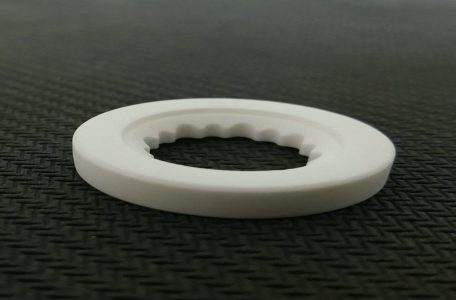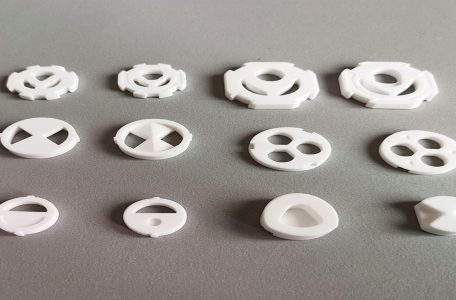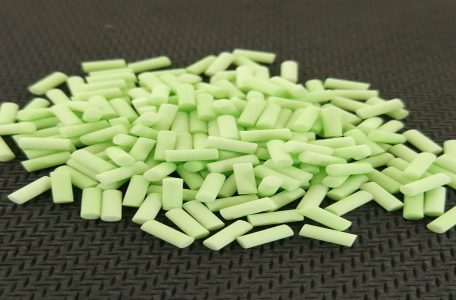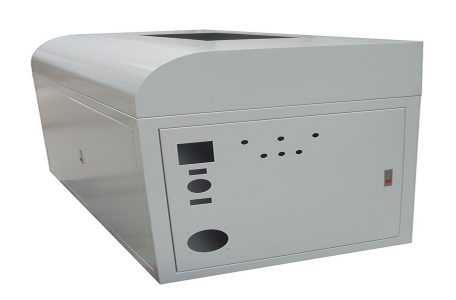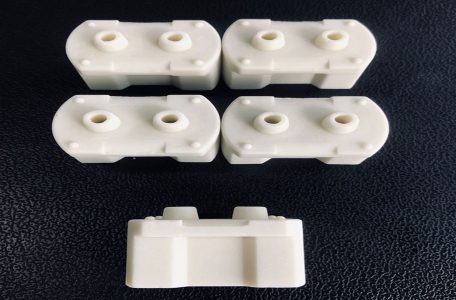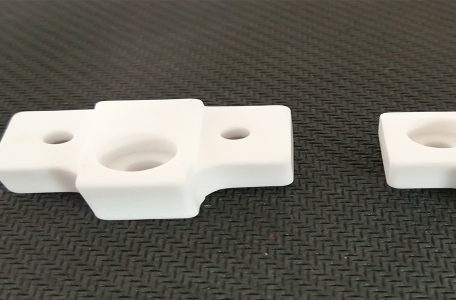Generally ceramics are opaque, but optical ceramics are as transparent as glass, so they are called transparent ceramics. Generally, the reason why ceramics are opaque is that there are impurities and pores inside. The former can absorb light, and the latter can scatter light, so it is not transparent. Therefore, it is possible to obtain transparent ceramics if high-purity raw materials are selected and pores are eliminated by technological means. Transparent zirconia ceramics have the advantages of high transmittance in the visible-mid-infrared band, excellent mechanical strength, good thermal shock resistance, etc., and are the preferred materials for high temperature windows and infrared fairings. The production cost of zirconia ceramics is Read more
With the continuous development and progress of science and technology, ceramic sheets have been widely used in various fields, so what are the two types of ceramic sheets? Next, Pintejin Ceramics will introduce to you. 1. Optical functional ceramic sheet In terms of optical functional ceramics: due to the small size effect, nanoparticles have optical properties that conventional bulk materials do not have, such as optical nonlinearity, light absorption, light reflection, light transmission characteristics, etc. Academician Hong Maochun from the Fujian Institute of Physics and Architecture of the Chinese Academy of Sciences has developed optical functional ceramic materials with excellent performance by using nanotechnology, focusing on three interrelated sintered Read more
Structural ceramics refer to ceramics used in various industrial sectors to manufacture mechanical equipment and machining tools. Structural ceramics are a kind of spiritual material. What are the characteristics and types of structural ceramics? Next, Pintejin ceramics will introduce to you. . Features of Structural Ceramics 1. Structural ceramics mainly refer to a large class of new ceramic materials that exert their mechanical, thermal, chemical and other properties. They can serve in many harsh working environments, and thus become the key to the realization of many emerging science and technology. 2. Structural ceramics have the characteristics of superior strength, hardness, insulation, heat conduction, high temperature resistance, oxidation resistance, Read more
There are many places where alumina ceramic structural parts are used. During use, alumina ceramic structural parts will also be damaged, which will cause irreparable losses to users. So what are the reasons for the damage to alumina ceramic structural parts? ? Next, Pintejin Ceramics will introduce to you. 1. External force A major factor for the wear of alumina ceramic structural parts is the strong external force, which is generally caused by impact force and pressure during operation. Due to the strong external force, it is worn or broken, which is unfavorable for the alumina ceramic structure. We should try our best to avoid the collision with the object Read more
Functional ceramic materials refer to materials that mainly use their non-mechanical properties in application. Such materials usually have one or more functions. What are the applications of functional ceramic materials? Next, Pintejin ceramics will introduce to you. Functional ceramic materials refer to materials that mainly use their non-mechanical properties in application. Such materials usually have one or more functions, such as electricity, magnetism, light, heat, chemistry, biology, etc., and some have coupling functions. , such as piezoelectric, piezoelectric, pyroelectric, electro-optic, acousto-optic, magneto-optic, etc. Due to the high development of science and technology, the performance, quality and requirements of ceramic materials are getting higher and higher, which has prompted Read more
ceramics The shaft is sintered with self-lubricated industrial ceramics, and its advantages are very significant. It is not only wear-resistant but also high-temperature resistant ceramics, so it is often used in motor ceramic shafts. The following Pintejin Ceramic Factory will show you the application of ceramic shafts in ceramic bushings. . Material classification of ceramic shaft and ceramic bushing: alumina ceramic shafts are divided into 2 types: 99% alumina ceramics and 95% alumina ceramics. 99 ceramics are mainly aimed at some small diameter shafts, mainly serving mid-end customers. 95 ceramics are generally aimed at some large diameter shafts. The main service and low-end customers. Zirconia ceramic shaft, mainly for some Read more
Zirconia ceramics is a new type of high-tech ceramics. Zirconia ceramics not only have high strength, high hardness, high temperature resistance, acid and alkali corrosion resistance and high chemical stability, so what are the advantages of zirconia ceramics in all aspects? Next, Pintejin Ceramics will introduce to you. Advantages of zirconia ceramic parts 1. Zirconia ceramic parts have excellent insulation, low high frequency loss and good high frequency insulation. 2. The heat resistance of zirconia ceramic parts has the characteristics of small thermal expansion coefficient, high mechanical strength and good thermal conductivity. 3. Zirconia ceramic parts have the characteristics of chemical corrosion resistance and molten metal properties. 4. Zirconia ceramic Read more
The application of several electronic ceramics has been introduced above, including insulating device ceramics and capacitor ceramics. They are all manufactured with insulating industrial ceramics with low dielectric constant. The following will continue to introduce ferroelectric ceramics and their characteristics. Versatile and versatile. Using its piezoelectric properties, piezoelectric devices can be made, which is the main application of ferroelectric ceramics, so ferroelectric ceramics are often called piezoelectric ceramics. Using the pyroelectric properties of ferroelectric ceramics (the effect of releasing charges on the surface of ferroelectrics due to changes in polarization intensity when temperature changes), infrared detection devices can be made, which can be used in temperature measurement, temperature control, telemetry, Read more
There are many sintering methods for zirconia ceramic rods, such as isostatic pressing sintering, hot pressing sintering, etc. The following Pintejin Ceramics Factory will mainly give a brief introduction to the hot pressing sintering of ceramic rods, and mainly introduce its sintering methods and characteristics. Hot pressing sintering of ceramic rods is a pressure sintering method with unidirectional pressure, and its principle is very simple. Definition of hot pressing sintering: a sintering method in which dry powder is filled into a mold, and then heated while pressing in a uniaxial direction, so that molding and sintering are completed at the same time. The hot-pressing sintering process is simply dry pressing Read more
Ceramic HIP sintering technology can produce materials with uniform microstructure, finer and denser grains at lower sintering temperature, and can produce products with complex shapes. So what are the characteristics of HIP sintering for zirconia ceramics? What? Next, Pintejin Ceramics will introduce to you. The hot pressing sintering process for zirconia ceramics can obtain dense ceramic sintered bodies at a lower temperature than pressureless sintering, and the sintering time is much shorter. However, hot pressing sintering adopts unidirectional pressure, so the shape and size of the product are limited by the mold, which is generally cylindrical or annular. In addition, unidirectional pressure also makes the pressure distribution in the green Read more

Ceramic Machining Industry
- Ceramic Flange
- Ceramic Nozzle
- Ceramic Pin
- Ceramic Plunger
- Ceramic Rod
- Ceramic Shaft/Ceramic Sleeve
- Ceramic Structure Parts
- Ceramic Valve
- Ceramics Cutter
- Electronic Ceramics
- Medical Food Ceramics
- Petrochemical Ceramics
- Photovoltaic Ceramic
- Semiconductor Ceramics
- Microporous Ceramic Suction Cup
- Lithium Battery Ceramic Pump
